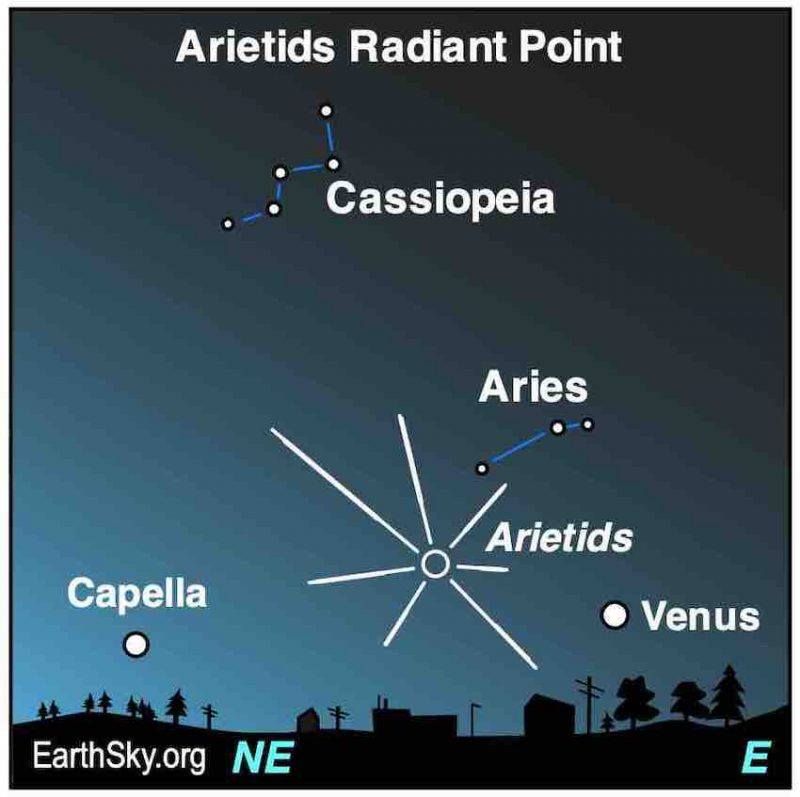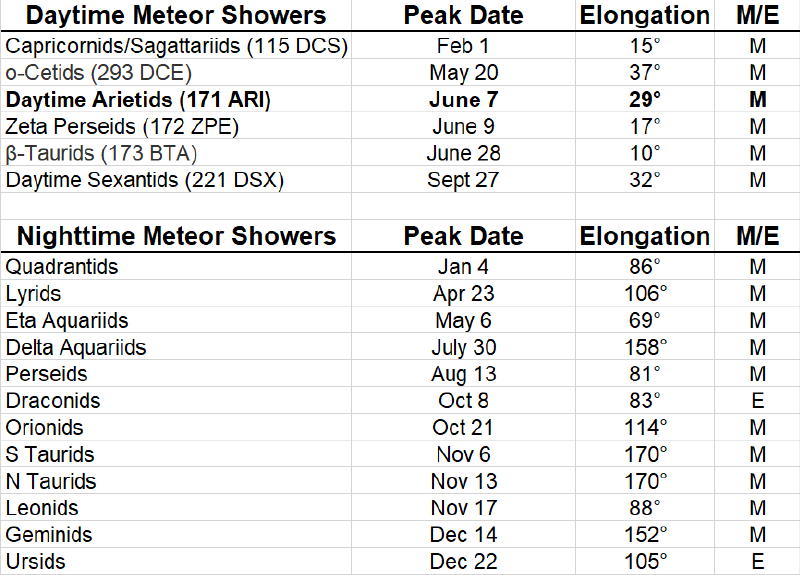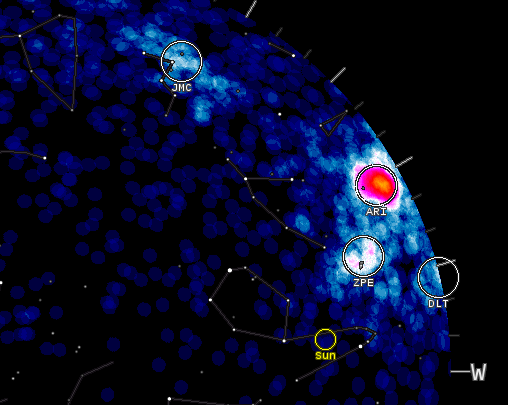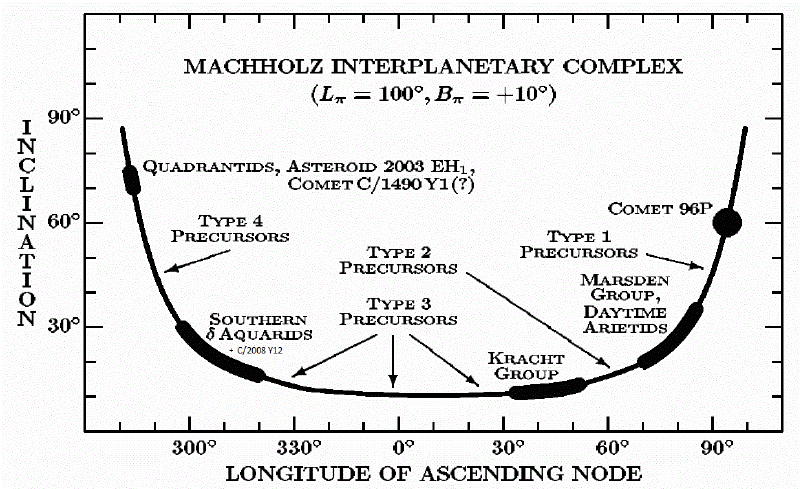
Arietids peak morning of June 7
Most meteor showers that we see each year are easy to observe. Just go outside and look up. But what about those meteor showers that happen mostly in the daytime, when the sun is up? These daytime meteor showers are much tougher to observe. Yet there is one peaking Tuesday, June 7, 2022, that you will want to come to know. The shower – which radiates from a point within the constellation Aries – is called the Arietids.
The Arietids are sometimes said to be the most active daytime meteor shower.
The Arietids have a broad peak (May 29-June 17). But, in 2022, the peak is centered on June 7.
And on that date the shower’s radiant point – the point in the sky from which the meteors appear to radiate – is only 29 degrees from the sun. This 29-degree angle – the angle between the sun and the meteor radiant as seen from Earth – is called the shower’s elongation. Below is a table showing both daytime and nighttime meteor showers. The table gives the elongation of each shower’s radiant and tells whether it is in the morning or evening sky (M or E). So, 29 degrees from the sunrise. And, comparing the Arietids to other daytime meteor showers on this chart, you can also see that the shower’s elongation (while not the greatest) is pretty great. That is, for a daytime shower, the Arietids’ radiants rises somewhat ahead of the sunrise.

How to observe the Arietids
So – although most Arietid meteors fly in daylight – you might catch an Arietid in the last dark hour before dawn, any time during the first and second weeks of June. And, in 2022, the shower’s peak comes on June 7.
The trick is to catch them in the narrow window after the radiant rises (or when it is about to rise), but before the visible breaking of dawn. The radiant rises just before the beginning of astronomical twilight, which is the darkest twilight stage, defined as the period of time when the center of the sun is 12 degrees below the horizon to 18 degrees below the horizon. You probably won’t even notice any illumination in the sky during astronomical twilight.
Face east and watch for meteors moving away from the radiant. The meteors will be moving out in all directions from the radiant. So many will never breach your horizon. But some meteors will move upward in your eastern predawn sky.
How many meteors will you see?
The shower’s zenithal hourly rate (ZHR) is defined as the number of meteors you’ll see in one hour, when the radiant is directly overhead and you can see stars as faint as magnitude 6.5.
For the daytime meteor showers, we have a couple of problems here. When a daytime meteor shower’s radiant is overhead, it’s daytime. And so you can’t see stars down to magnitude 6.5. But when it’s nighttime and seeing faint stars becomes possible, a daytime meteor shower’s radiant is below your horizon.
So we never have ideal conditions for seeing the Arietids. But they have an awesome ZHR! Meteor counts with radar and radio echoes have indicated a rate of 60 meteors per hour, and perhaps as high as 200 meteors per hour.
How many will you see on the morning of June 7, or the several mornings after that? At the website of the American Meteor Society (AMS), in his Meteor Outlook for June 4 to 10, 2022, Robert Lunsford (who placed the peak of the shower on June 4; meteor shower peaks often vary between experts) wrote:
Current rates are expected to be less than 1 no matter your location.
But who knows? You might see more! And it’d be fun to see any meteors from this (mostly) daytime shower.
Also, Robert Lunsford points out:
You can keep track of the activity of [daytime] meteor showers, as well as those beyond the limits of visual observing, by visiting the NASA Meteor Shower Portal available at: https://meteorshowers.seti.org/ You can move the sky globe to see different areas of the sky. Colored dots indicate shower meteors while white dots indicate sporadic (random) activity. The large orange disk indicates the position of the sun so little activity will be seen in that area of the sky.

Arietids history and parent comet
The Arietids have a fascinating history. Astronomers at the Jodrell Bank Radio Telescope in England first noticed them in 1947. Here’s a paper that discusses this daytime meteor shower, plus three other showers. Scientists made the discovery with radar echoes and confirmed them, in some cases, with photographs.
For many years, no one knew the parent comet for the Arietids. Then, in May 1986, this author, Don Machholz, discovered a comet that became known as 96P/Machholz. This comet might be directly involved with this meteor shower, or the shower’s source might be a part of the Machholz Complex. The Machholz Complex is a combination of two comet groups, eight meteor showers and at least one asteroid all associated with Comet 96P/Machholz.
If you see an Arietid meteor in 2022, let us know!

Bottom line: The Arietids are mostly a daytime meteor shower, but the radiant rises in the dark hour before dawn. The Arietids peak on the morning of June 7, 2022. Face east, and watch for meteors shooting up from the horizon.
The post Arietids – most active daytime meteor shower – peaks this week first appeared on EarthSky.
0 Commentaires